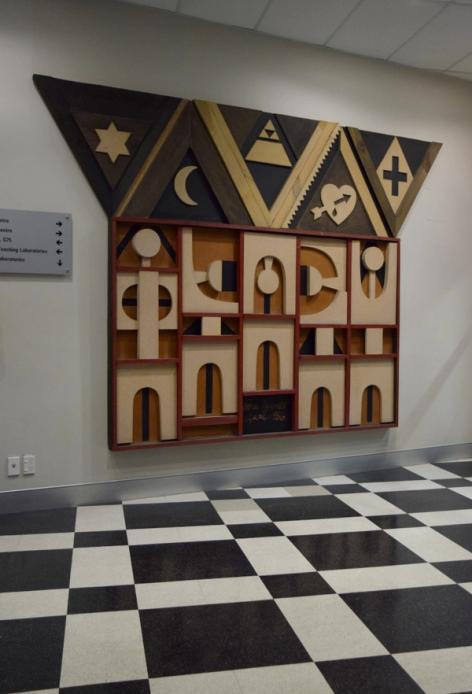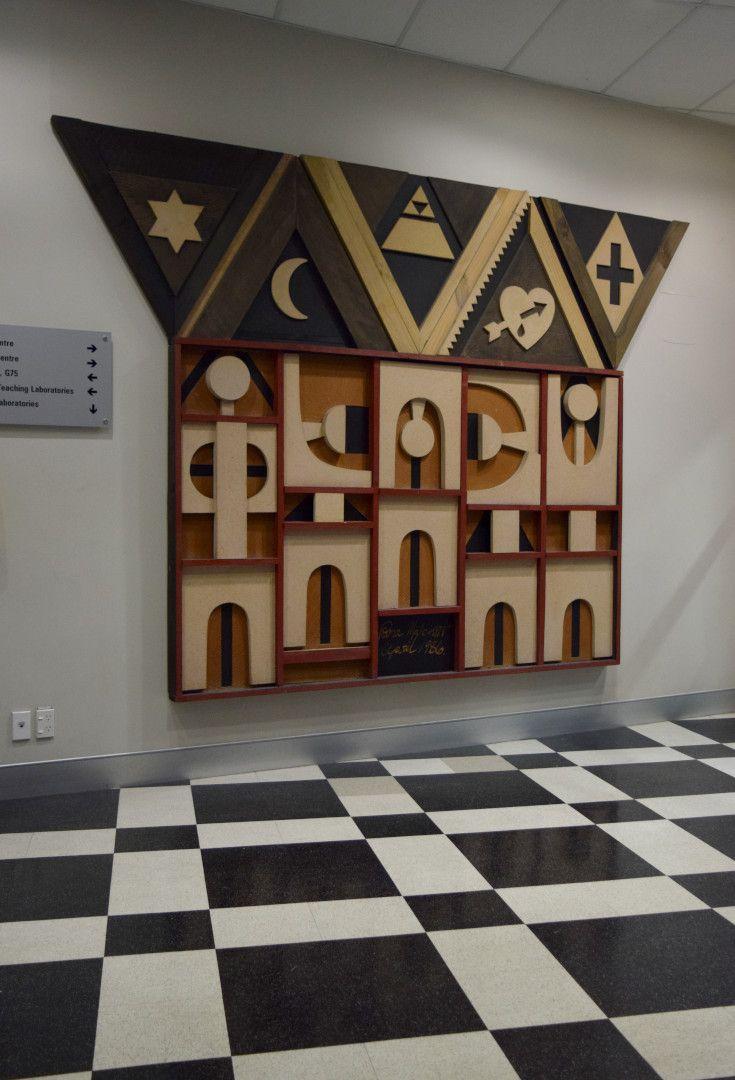Te Wepu
Paratene Matchitt
Type
- Wall Mounted Sculpture
Medium
- Paint
- Mixed Media
- Wood
Dimensions
- H2440 x W3500 x D150mm

Para Matchitt (Te Whānau-ā-Apanui, Te Whakatōhea and Ngāti Porou), ‘Te Wepu’ (1986), University of Auckland, Tāmaki Makaurau Auckland
Images: Bronwyn Holloway-Smith, Public Art Heritage Aotearoa New Zealand, 2021

- DETAILS
- MAP
Description
"Square, triangular and rectangular units in sections of wood and chipboard are nailed and butted together in this relief sculpture, forming an integrated collection of diverse components...
This sculpture is named for Te Kooti Arikirangi Te Turuki (c.1832-1893), a personal favourite of Matchitt’s and an important nineteenth-century leader. Te Kooti’s intense visions while in exile on the Chatham Islands led him to found the Ringatū (Upraised Hand) faith and he escaped to the Urewera, where he forged allegiances with Tuhoe leaders. Matchitt’s sculpture shows five standing figures in the lower part, the central one standing on a plinth inscribed with the date, April 1986. Above are the symbols taken from Te Wepu or The Whip, Te Kooti’s triangular pennant flag which measured 16 metres by 1.2 metres. It was decorated with a crescent moon, a cross, a six-pointed star, a mountain representing New Zealand and a bleeding heart that was thought to have symbolised the sufferings of Māori people since colonisation."
